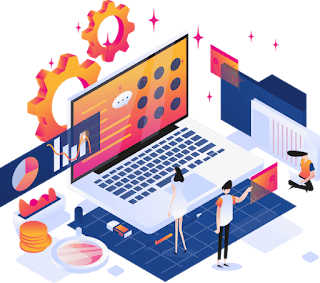5 Current Advancements Affecting Supply Chain Management
Demand forecasting software will help your company in many ways. There are many amazing technologies all around us including big data, cloud computing, artificial intelligence, robotic process automation, and the internet of things.
In
a world where most things change constantly, business owners everywhere search
for effective methods to handle these changes.
Demand forecasting in the supply chain is an
option many turn to. It can be hard to understand not only what consumer demand
is going to be, but also how your company can meet that demand. Demand planning
and forecasting give you the information you need to make plans to meet
upcoming demand trends.
What is Demand Forecasting Software?
Demand forecasting software uses the latest technologies to produce forecasts of what
your future market demand will look like. These forecasts can be tailored to
the needs of your company. For example, the length of time that’s forecast can
be adjusted to show more short- or long-term predictions of demand.
There
are multiple benefits that your company can see when you choose to implement
demand forecasting tools. Your management team will be able to make much more
effective decisions. These decisions will be seen in your inventory management,
labour schedules, manufacturing efforts, marketing strategies, product levels,
as well as in more areas.
Supply
chain software is always sure to keep up with improvements being made in
technology. There are currently multiple advancements being made, and supply
chain management is headed in the same direction. Some of these changes are
regarding big data, robotic process automation, cloud computing, artificial
intelligence, and the Internet of Things.
Big Data
Big
data is all around us. It refers to a large amount of technology handled by a
company on a day-to-day basis. When businesses make decisions, this data is
heavily relied upon and analyzed. These companies collect data about their
consumers using many methods. Some of these methods are by getting data from
other companies, directly asking consumers for it, and tracking the habits and
actions of their consumers.
Examples
of big data include stock exchanges and social media sites.
Robotic Process Automation (RPA)
RPA
causes the software to be programmed to automatically do some features without
human interaction. This can be done across multiple applications and includes
software robots that automatically perform tasks.
Examples
of RPA include automated supply chain processes, data entry, predictive
maintenance, and the creation of reports.
Cloud Computing
Cloud
computing is when data is available on-demand without direct user management.
It’s used all around us, and it’s becoming more and more common. It’s a much
more convenient method used to store data. Some examples of uses for the cloud
are data storage, servers, databases, networking, and software.
A
common example of cloud computing is the Google Cloud.
Artificial Intelligence (AI)
AI
refers to when tasks that have traditionally been completed by humans are
completed by technology. This concept can sound far-fetched, but it’s fairly
common. AI can be used in speech recognition, visual perception,
decision-making, language translation, and more.
Some
examples of artificial intelligence are social media monitoring, self-driving
cars, automated financial investing, and disease mapping.
The Internet of Things (IoT)
The
Internet of Things refers to a network of physical objects (things). These
objects are embedded with technologies, like sensors, that allow them to
connect with other devices and systems over the internet. When they connect,
data can be shared.
There
are many things that use the IoT to operate, and we use these items daily. Some
examples are refrigerators, cars, lights, thermostats, irrigation systems,
tractors, home security, activity trackers, as well as many more.
It’s
necessary for supply chain management systems to stay up to date with changes
made in technology. To ensure the best accessibility and visibility, demand
forecasting in the supply chain must be as up to date as possible. The more
transparency the better, and demand forecasting tools enhance transparency.
What to do to keep your company in line with technological times!
If
you have a company, and if your company has any kind of inventory, you need
demand forecasting software.
Demand planning and forecasting will strengthen your operations in ways you would’ve never expected. There are multiple options for demand forecasting software, and it’s important for you to find the best option for your specific needs.



Comments
Post a Comment